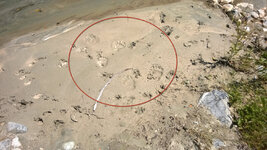NeverSummer
FNG
I can confidently find, stalk and kill most things on the hoof and decided to take up bear hunting in 2021. A bear lard pastry crust filled with Palisade peaches sounds divine. I drew a very solid bear unit in south western CO. The environmental conditions were this: absolutely insane berry crop, some acorns, so the bears could have been anywhere due to wide availability of excellent feed. We scoured berry choked drainages, still hunting. We sat and glassed on water and in the few areas where we had enough visibility to see an open spot. We finally got into some excellent recent sign on our last two days, near water and on a berry and acorn choked slope. We did both still hunting and sit and wait/glass. Never saw a single bear (except 200 yards into the wrong unit haha). So here's my questions (note, in Colorado it's fall only season, no bait, spot and stalk only):
1. What are some things new western bear hunters do wrong?
2. Did we move around too much? How long do you typically sit and glass before moving? I'm wondering if for bears it could be an extremely long time in an area with good sign?
3. In a wet year with plentiful food, is sitting on water less productive?
4. Can predator calls like fawn bleats or cottontail distress get a bear that is nearby to show themselves?
5. Other tactics you employ?
6. How much do you use cameras to scout? I'm not a big trail cam person and have never needed them to be successful with mule deer or elk. But I'm wondering with a cryptic fairly solitary animal such as a bear if this is more important.
Thanks for any insights. I'll be back at it in 2022.
1. What are some things new western bear hunters do wrong?
2. Did we move around too much? How long do you typically sit and glass before moving? I'm wondering if for bears it could be an extremely long time in an area with good sign?
3. In a wet year with plentiful food, is sitting on water less productive?
4. Can predator calls like fawn bleats or cottontail distress get a bear that is nearby to show themselves?
5. Other tactics you employ?
6. How much do you use cameras to scout? I'm not a big trail cam person and have never needed them to be successful with mule deer or elk. But I'm wondering with a cryptic fairly solitary animal such as a bear if this is more important.
Thanks for any insights. I'll be back at it in 2022.

